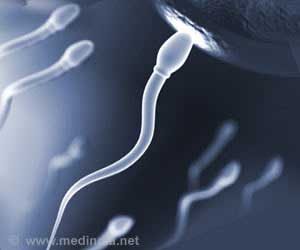Orgasm is all about rhythmic sexual activity, suggested a new paper from Northwestern University researcher.

‘Orgasm is all about rhythmic sexual stimulation, suggested a new paper from Northwestern University researcher.’





Safron describes how rhythmic stimulation can enhance neural oscillations at corresponding frequencies, somewhat like pushing someone on a swing. Through this process, called neural entrainment, if sexual stimulation is intense enough and goes on long enough, synchronized activity could spread throughout the brain.This synchrony may produce such intensely focused attention that sexual activity outcompetes usual self-awareness for access to consciousness, so producing a state of sensory absorption and trance. This may be crucial for allowing for a sufficient intensity of experience to trigger the mechanisms of climax.
"Synchronization is important for signal propagation in the brain, because neurons are more likely to fire if they are stimulated multiple times within a narrow window of time," Safron said. "Otherwise, the signals decay as part of a general resetting mechanism, rather than sum together. This then caused me to hypothesize that rhythmic entrainment is the primary mechanism by which orgasmic thresholds are surpassed."
Safron said this research could be relevant for improving sexual functioning, encouraging people to focus more on the rhythmic aspects of sexuality.
"The idea that sexual experiences can be like trance states is in some ways ancient. Turns out this idea is supported by modern understandings of neuroscience," Safron said. "In theory, this could change the way people view their sexuality. Sex is a source of pleasurable sensations and emotional connection, but beyond that, it's actually an altered state of consciousness."
Safron found parallels between sexual climax and seizures as well as with music and dance - something he wasn't expecting. In both orgasm and reflex seizures, rhythmic inputs into high-bandwidth sensory channels resulted in an explosive process after certain stimulation thresholds were surpassed.
"And although obvious in retrospect, I wasn't expecting to find that sexual activity was so similar to music and dance, not just in the nature of the experiences, but also in that evolutionarily, rhythm-keeping ability may serve as a test of fitness for potential mates."
He said this is consistent with the fact that rhythmic song and dances are nearly universal parts of mating, going back hundreds of millions of years to our common ancestors with pre-vertebrate animals such as insects.
Safron's previous research has focused on the neural bases of sexual preferences. He said orgasm is related to this work because it is one of the most powerful rewards available, and therefore, may have an important role in shaping preferences.
"Before this paper, we knew what lit up in the brain when people had orgasms, and we knew a lot about the hormonal and neurochemical factors in non-human animals, but we didn't really know why sex and orgasm feel the way they do," Safron said. "This paper provides a level of mechanistic detail that was previously lacking."
Source-Eurekalert















